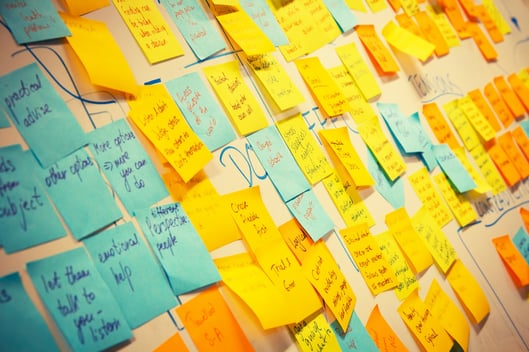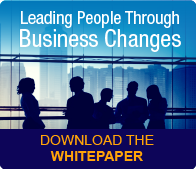We’ve been talking a lot about Next Generation Change Management, and why it’s so critical for Change Agents to focus on impact not activity. A good starting point for Agents and their Sponsors is to have an agreed upon definition of implementation roles and responsibilities. Don Harrison, developer of the Accelerating Implementation Methodology (AIM), describes the four roles as a CAST of characters: Champions, Agents, Sponsors and Targets. 
Champions are individuals who believe in the change, but may or may not have the authority to make it happen. Change Agents are actually responsible for implementing it. Change Agents are accountable for all implementation activity including strategy, design, deployment, and evaluation of the change. At least part of an Agent’s performance evaluation should be based on the success of the implementation.
That’s a lot. So where should Change Agents focus their limited time and efforts?
Change Agent TO DO List
The Accelerating Implementation Methodology (AIM) describes 10 core principles that provide directional guidance on what Change Agents should be doing to impact the implementation. Remember though, these principles aren’t “completed” in a linear way; rather, they guide Agents on what to do based on the day-to-day realities of the project.
- Define the Change—Change Agents should work with the project team to develop a clear and compelling change definition that includes identification of the human behavioral changes in the future state. These also need to be discussed with Sponsors so there is agreement from the very start. The critical first change deliverable is a compelling Business Case for Action that is an elevator speech describing what we are doing, why, and what are the consequences if we don’t succeed. Further work is needed to identify impacts by Target Group and potential sources of disruption.
- Build Agent Capacity—Every SME is not suited for the Change Agent role. In fact, in Next Generation Change Management, different types of Agents are needed at various points in the project, including Agents with strong relationships and Agents with technical expertise. Agents must have the right skills, traits, and characteristics, and need training for their role. From a project perspective, successful implementation requires the right number of Agents in the right places.
- Assess the Climate—A critical Agent task is to define the “climate” into which this change will be introduced. The core AIM principle states that no change is completed in isolation; it is introduced in the context of all the other changes going on, and lessons learned from past implementations. Change Agents should use tools like heat mapping and the AIM Implementation History Assessment so they are able to have data-based discussions with Sponsors on climate issues.
- Generate Sponsorship—The most critical Change Agent task is to promote visible, active Sponsorship throughout the project. This task is never “done.” Change is accelerated when what leaders say, do, and reinforce are all aligned. Effective Change Agents should have well-developed Sponsor Contracting skills so that their Sponsor discussions drive appropriate action.
- Determine Change Approach—Sponsor actions will be different for compliance changes vs “commitment” changes. Agents should promote different tactics and strategies depending on the type of change.
- Develop Target Readiness—Resistance is inevitable, and it’s a function of the level of work disruption—how many things are going to be different as a result of this change, not whether a change is perceived to be positive or negative. Change Agents should use strategies like involvement to pro-actively build Target readiness and reduce resistance. That said, Next Generation Change Management encourages Agents to spend more time “looking up” the organization to Sponsors than on focusing on Targets, especially at the beginning of projects.
- Build a Communication Plan—AIM based communications focus on delivering the right message to the right audience, using the right communication vehicles. Too many Agents, and for that matter, too many Sponsors, still think the role of a Change Agent is simply to communicate top-down messaging (and to train.) No communication should go out without a feedback loop to gather reactions to both the content of the change and how the change is being implemented.
- Develop a Reinforcement Strategy—Reinforcement is the power lever to motivate behavioral changes. Change Agents should spend a lot of time working with their Sponsors to implement appropriate reinforcements (both positive rewards and negative consequences) with the Sponsors’ direct reports. Reinforcements should be aligned to new performance expectations, and these expectations need to be clearly defined.
- Create Cultural Fit—The alignment between the content of the change and the culture into which it is introduced can predict potential barriers to implementation success. Change Agents can’t ignore cultural factors, because the gaps between culture and the change are at the root of many failed changes.
- Prioritize Action—Project teams and Agents should develop a “People” Plan that is blended into the technical project plan. While these planned actions and deliverables are important, Next Generation Change Management stresses the importance of unplanned interventions vs on planned activities.
It’s Not About Checking Things Off The List
It goes without saying that change is cyclical, not linear. Principles should drive Change Agent actions. The most important To Do’s aren’t “check-the-box” activities. Today’s Next Generation Change Agents aren’t spending their days completing a rigid set of tools or templates. Their most important tasks are the interventions that require knowledge, skill, judgment—and courage!


